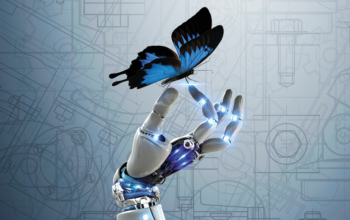What Is Data Science?
Data science is the study of data. It encompasses everything from collecting, cleaning, and analyzing data to understanding its meanings and complexities. The importance of data science lies in its ability to help businesses make better decisions. By understanding data, businesses can optimize their operations, understand their customers better, and make more informed decisions.
The lifecycle of data science includes four stages: data collection, data processing, data analysis, and decision making. In each stage, different skills are requires to achieve success. Data collection involves acquiring the necessary raw materials (e.g., information from surveys or interviews). The Data processing involves transforming the raw materials into usable form (i.e., cleansing the data). Data analysis involves exploring and understanding the meaning of the collected information (e.g., identifying trends or relationships). Decision making requires taking all this information and using it to make decisions that affect business outcomes (for example, deciding which marketing campaigns to run). The Data Science Training in Hyderabad course by Kelly Technologies is an apt choice to leverage job-centric skills in this domain.
The Importance
Data science is a critical field for businesses today. Companies use data science to make better decisions, automate processes, and improve customer experience. In fact, data science has become so important that it has even given its own branch of mathematics: statistics. Data science can help you understand your customers better, target marketing campaigns more effectively, and optimize operations.
Data science is a big field that can be difficult to understand. However, with the right education and experience, you can become a master of data analysis. There are many different types of data science, but all involve using mathematical models to understand and improve the quality of data.
The Data Science Lifecycle
When it comes to data science, there is a lot of confusion. So, in this blog post, we will attempt to clear up what data science is and discuss the steps that go into a typical data science project.
A data science project can be broke down into four main stages: cleaning, transformation, analysis, and modeling. In the first stage is “cleaning,” the data cleanse of any noise or irrelevant information. This include things like removing duplicates or rows that are not actually relevant to the analysis being do. The second stage is “transformation” where the data is manipulates in some way so that it is easier to work with. This could involve transforming numerical data into something more useful for analysis or turning text data into a format that can be process by a machine learning algorithm.
The third stage is “analysis” where the data is analyzed using various tools and techniques to understand what it contains. This could involve looking at how different variables relate to each other or figuring out which pieces of data are most important for predicting future behavior. The final stage involves “modeling” where predictions are about what will happen next base on information from the analysis phase. Models can be simple rules that take as input one variable from the previous two stages, or they may be complex systems that attempt to predict all possible outcomes based on multiple factors.
Big Data And Data Science
Data science is the process of mining accurate information from big data. This process can use to find trends and make predictions. Additionally, it can use to improve decision making. By using data science, businesses can avoid making costly mistakes, and they can improve their overall performance.
Big data is a term for data sets that are so large or complex that traditional data processing applications are inadequate. These technologies allow big data to be studied in ways that would not be possible with smaller datasets. As a result, big data has the potential to revolutionize many fields, including business management, marketing, and research. One of the primary benefits of big data is its ability to improve business productivity. With big data, businesses can avoid making costly mistakes. Additionally, they can improve their overall performance by using data science to make better decisions. By understanding big data, businesses can identify patterns and insights that would otherwise be difficult to detect.
Big data has also had a significant impact on research. By processing large datasets in machine learning algorithms or artificial intelligence, researchers are able to identify patterns and trends that would otherwise be hidden. This process is often called “data mining” and it has led to important discoveries in fields such as medicine and aerospace engineering.
Machine Learning And Data Science
Data science is an advanced field that makes use of concepts from different domains to make accurate interpretations out of data. Machine learning is a subset of data science that deals with the construction and study of algorithms that can learn from and make predictions on data.
Gathering Data: Data science begins with the collection of data. This can be do manually or through automation means such as sensors or software platforms.
Processing Data: Once the data has been gathered, it must be processed so it could meet the needs of the desired analysis. This may involve cleansing the data, transforming it into a suitable format, and loading it into a machine learning algorithm for training purposes.
Exploring Data: Once the data has been processed and loaded into a machine learning algorithm, it must be explored to identify patterns or trends within it. This involves using various statistical techniques to explore how different types of variables interact with one another.
Building Models: After exploring data, models must be built in to make predictions about future events based on past experiences with similar datasets. These models are often based on artificial intelligence (AI) principles such as reinforcement learning or deep Learning Neural Networks (DLNNs).
Deploying Models: Finally, models must be deployed so that they can generate predictions about future events using real-world data sets. This involves configuring them so that they are able to work effectively with specific types of datasets, as well as tuning their parameters accordingly.
Monitoring Models: It is important to continuously monitor model performance to ensure accuracy and stability across different situations.
Deep Learning And Data Science
Data science is the process of extracting knowledge from data. This can use to find trends, make predictions, and take actionable insights from data. It can be applies to any industry or sector for competitive advantage. Deep learning is a subset of machine learning that uses artificial neural networks to learn from data. This can use for image recognition, text classification, and predictive analytics.
Deep learning has been used in a number of applications, such as image recognition and text classification. Image recognition uses deep learning to identify objects in pictures. Text classification uses deep learning to determine the type of text that is being seen. Predictive analytics uses deep learning to predict future events or trends.
Neural Networks And Data Science
Neural networks are a powerful tool for data science. They can use to solve complex problems and can learn from data, becoming more efficient and accurate over time. It is important because it helps us make better decisions. For example, data science can help us identify patterns in data or recommend solutions based on data.
A neural network is a computer system that uses artificial intelligence to learn. This means that it can “learn” by observing and analyzing data. Neural networks are composed of interconnected processing nodes, or “neurons,” which are connected by links called “weights.” The weights determine how strongly the neuron will respond to a particular input.
The main advantage of neural networks is that they can be very powerful in solving problems. They can use to process large amounts of data, to make predictions, and to identify patterns. Neural networks are also relatively easy to set up and use, which makes them ideal for data-driven applications such as recommendation engines or fraud detection systems.
The Future
The future of data science is big data. This means that data will become increasingly important, and the skills necessary to work with it will become more important. This will help companies make better decisions by helping them to understand complex patterns and trends. Additionally, it will allow companies to personalize their products and services for their customers in a way that was not possible before.
One of the most important things data science can do is to help companies understand their customers. This means understanding their needs and wants, and then providing them with products and services that meet those needs. Additionally, it can use to improve customer service. By understanding how customers are using products and services, companies can provide better support for them.
Overall, it is going to continue to become more important in the future. It will help companies make better decisions, provide better customer service, and more.
Conclusion
This Article in Indian-Guru has given you the information which is hottest topic in the world. Data science is a critical field for businesses today. Companies use data science to make better decisions, automate processes, and improve customer experience. In fact, it has become so important that it has even given its own branch of mathematics: statistics. It can help you understand your customers better, target marketing campaigns more effectively, and optimize operations,
Read More




